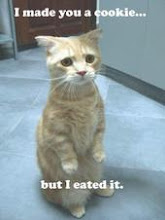Communion is Everywhere
Journal Entry: October 11, 2010
Katelyn Hardin
Communion is Everywhere
Through clearly stated detail and diction, Thomas C. Foster, in How to Read Literature Like a Professor, presents the fact that if one takes the time to look about, he will find acts of communion in every corner. Communion can take on different symbolic meanings, but all in all, it means the act of people coming together to eat or drink.
When one thinks of communion, he normally thinks church. This is a plausible thought because, at church, people come together to take in the body and blood of Christ. But church communion isn’t the only form of communion; people perform acts of communion in everyday life. Eating together at the lunch table in school, or around the snack machine at work, or even at home around the dinner table or just relaxing on the couch with a drink in hand; communion comes in all sorts of different forms.
Communion, as it is normally thought of, always symbolizes good happenings. Well, most of the time this is true. The taking in of the body and blood of Christ shows one’s love and thanks for his savior, and most of the time, eating lunch or lounging can be relaxing and thought provoking. But, meals can take a turn for the worse. Something bad can happen, such as someone baring bad news, or an unexpected, unwanted intruder arises to ruin the supper. When happenings such as those occur, the communion plummets from good to terrible. We find that, at times, people plot the demise of the other, and; therefore, the revulsion of doing harm to “one’s dinner companion” is reinforced.
Communion is important in the world of yesterday, today, and tomorrow. One learns things from dining and drinking with another, and whether that lesson is good or bad, it is still a valuable lesson to be learned.
Foster, Thomas C. "Nice to Eat with You: Acts of Communion." How to Read Literature like a Professor: a Lively and Entertaining Guide to Reading between the Lines. New York: Harper, 2008. 7-14. Print.
Subscribe to:
Post Comments (Atom)

No comments:
Post a Comment